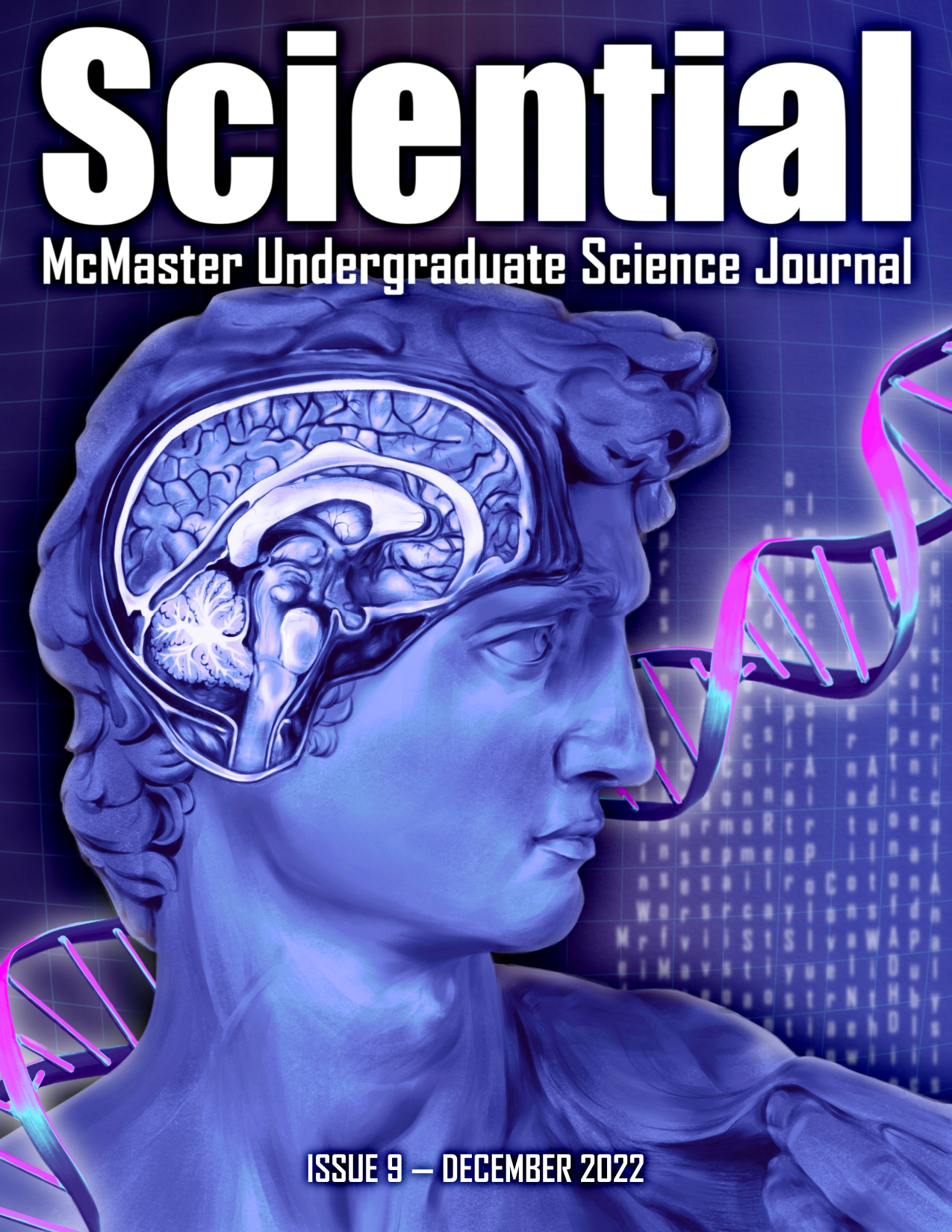An Interdisciplinary Review of the Qualities of Glioblastoma Multiforme
DOI:
https://doi.org/10.15173/sciential.v1i9.3201Keywords:
Brain Cancer, Glioblastoma Multiforme, CT Scans, Chemotherapy, Radiation TherapyAbstract
Brain cancer, despite being one of the rarest forms of cancer, is one of the most substantially impactful cancers known to humankind. In this review, a comprehensive analysis of the multifaceted nature of brain cancer is conducted, with a particular focus placed on Glioblastoma Multiforme (GBM). Epidemiology, prevention measures, treatment techniques, and determinants of susceptibility are investigated to gain a deeper understanding of GBM. Additionally, the biophysical concepts used in Computed Tomography (CT) scanning for tumour detection are explored. Radiation therapy as a treatment modality for GBM is examined using Intensity Modulated Radiation Therapy (IMRT). Furthermore, the mechanism of action of Temozolomide, the prevailing chemotherapeutic drug used to hinder GBM growth by methylating target DNA sites, was also analyzed. Additionally, a cell survival curve outlining a traditional fractionation schedule of 2.21 Gy installments was created to effectively model a conventional radiation treatment plan. As a result, we are able to gauge the efficacy of such radiation treatments. In summation, we present a broad synopsis of the current strategies, insight, and approaches used to detect, image, and treat the malignant growth of GBM.
Downloads
Published
How to Cite
Issue
Section
License
Copyright (c) 2022 Sciential - McMaster Undergraduate Science Journal

This work is licensed under a Creative Commons Attribution-NonCommercial-ShareAlike 4.0 International License.
Authors submitting to the journal must adhere to the terms of Attribution-ShareAlike 4.0 International (CC BY-SA 4.0) license as outlined below:
1. You are free to share (copy and redistribute) any material from this journal, granted you have given appropriate credit, provided the link to the license, and indicated whether changes were applied to original work.
2. You are free to adapt (remix, transform, and build upon) any material from this journal, granted you distribute your work under the same license.



